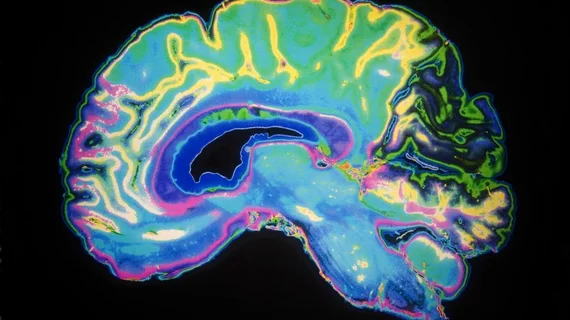AI helps manage ‘tedious, lengthy’ image labeling process
Deep convolutional neural networks (CNNs) can be trained to predict sequence types for brain MR images, according to new research published in the Journal of Digital Imaging.
The study’s authors noted that the variety of names manufacturers and healthcare providers use for sequence types can cause significant confusion.
“For multi-institutional data repositories, successful image annotation requires a designated, trained individual who focuses on the intrinsic image weighting and the characteristics of image content rather than manufacturer or institutional nomenclature,” wrote lead author Sara Ranjbar, PhD, of the Mayo Clinic in Phoenix, and colleagues. “This lengthy and tedious manual process creates a bottleneck for aggregation of large image collections and impedes the path to research. An automated annotation system that can match the speed of image generation in the big data era is sorely needed.”
Ranjbar et al. wanted to use deep learning techniques to predict the sequence type of MR scans for brain tumor patients, working specifically to differentiate between T1-weighted (T1W), T1-weighted post-gadolinium contrast agent (T1Gd), T2-weighted (T2W) and T2 fluid-attenuated inversion recovery (FLAIR).
“To the best of our knowledge, no previous work has focused on automatic annotation of MR image sequence types,” the authors wrote. “This form of classification can be highly useful for building large-scale imaging repositories that can receive submissions from heterogeneous data sources.”
The team turned to a database of more than 70,000 MR studies from more than 2,500 patients, focusing on T1W, T1Gd, T2W and FLAIR sequences. More than 14,000 2D images were chosen for the study, with 9,600 images being used to train the CNN, 2,400 being used to validate it and another 2,400 being used to test its effectiveness.
Overall, the average area under the ROC curve (AUC) on the validation set was more than 0.99. For all four sequence types being studied, sensitivity was at least 0.983, specificity was at least 0.994 and accuracy was at least 0.992.
“Our result shows that convolutional neural network predictor of MR sequence type can achieve accuracy, sensitivity, and specificity of 99% in identification of sequence type on previously unseen MR images,” the authors wrote. “This is a notable success given the two-fold variability in our training data: one with regard to image content (presence/absence of tumor, head position, slice number, treatment effects, etc.) and another as a result to diversity of imaging parameters (echo time, repeat time, field strength, etc.) across a spectrum of imaging sites. Our result suggests that the tedious, lengthy and erroneous task of manual image labeling for multi-institutional medical image repositories can reliably be managed using automatic annotation systems using artificial intelligence.”
A 3D network, the team added, may have been “the more natural choice,” but a 2D CNN ensured “a reasonable training time” and used fewer memory and computing resources.

